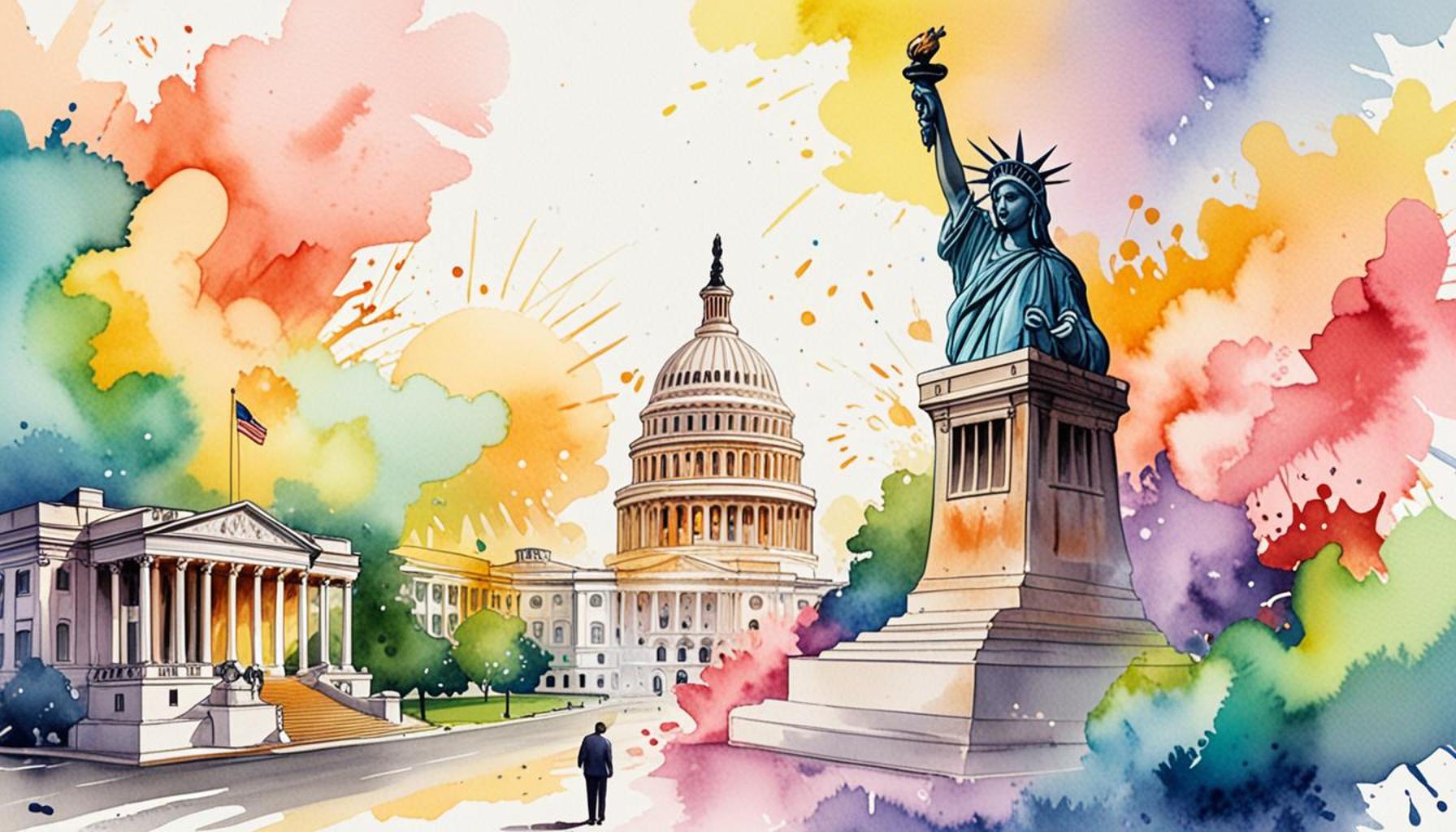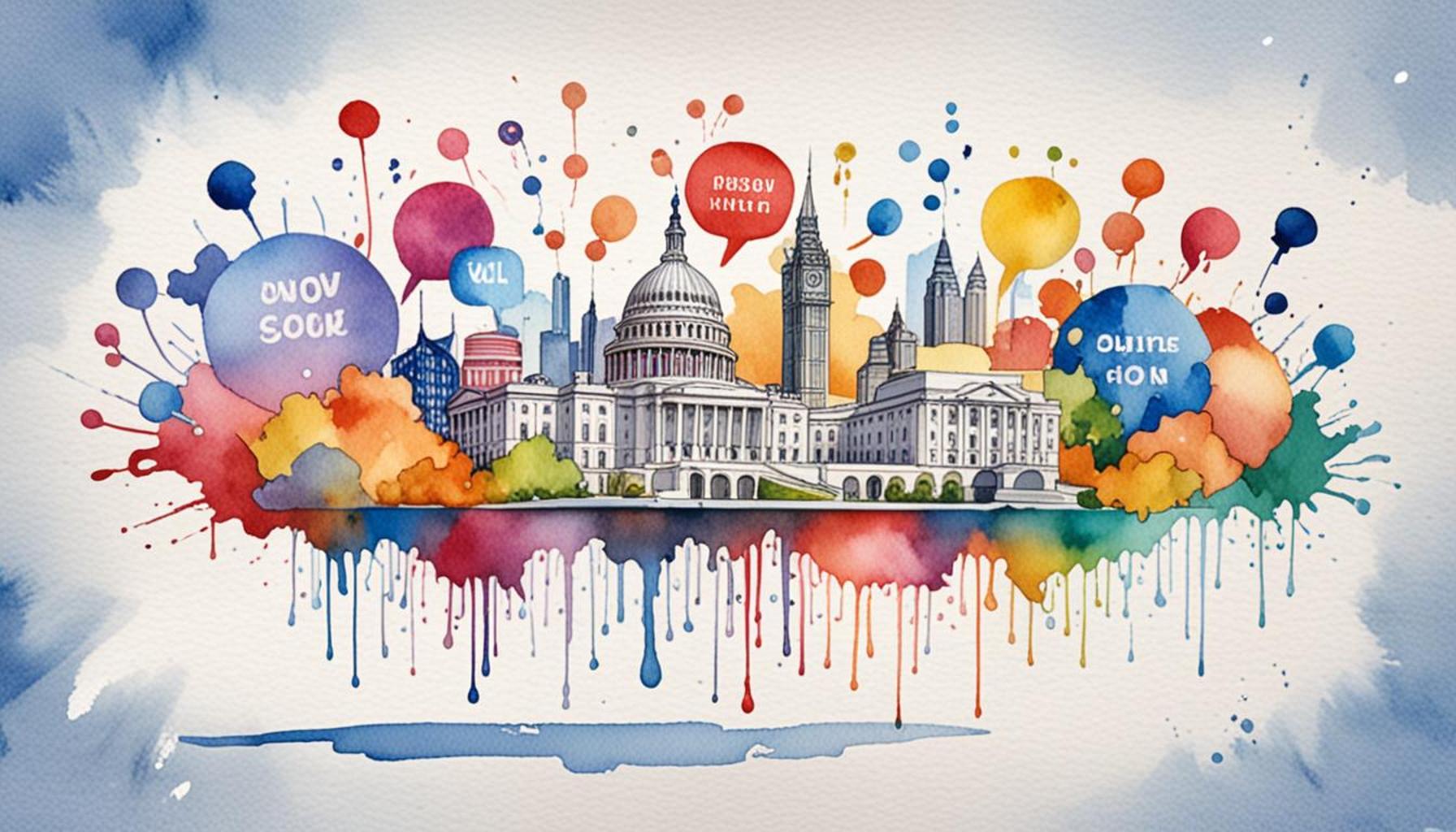The Role of Social Media in the Dissemination of Information about Government Benefits and Its Content Strategy

Understanding the Influence of Social Media on Government Benefits
In today’s digital age, social media platforms are revolutionizing the way information is shared, especially concerning government benefits. These platforms serve as powerful tools for disseminating crucial updates and assistance programs to millions of Americans, dramatically transforming the landscape of public service communication.
As the world moves rapidly towards digital solutions, consider the various ways in which social media influences public awareness:
- Speed of Information: News spreads almost instantaneously across platforms like Facebook, Twitter, and Instagram. For instance, during the rollout of the COVID-19 relief programs, social media served as a primary channel for information dissemination, allowing users to receive updates on eligibility and application procedures almost in real-time.
- Wider Reach: Social media users have the power to share content with friends, family, and broader networks, amplifying the message. For example, a single tweet or Facebook post about federal aid can reach thousands of individuals in seconds, encouraging those who may not be aware of programs like unemployment benefits to learn more and apply.
- Engagement: Social media platforms enable governments to interact directly with citizens. Officials can utilize tools like live Q&A sessions or comment threads to answer questions and address concerns, fostering a sense of community and transparency. This direct interaction eliminates barriers that typically separate government entities from the public.
The targeted nature of content strategies in social media allows for more tailored messaging to reach specific demographics more efficiently. For instance, posts can focus on:
- Eligibility for programs such as the Supplemental Nutrition Assistance Program (SNAP) or Medicare. By utilizing tailored posts, officials can ensure that the right information reaches populations that qualify but may not know about the benefits available to them.
- Updates on changes to state or federal assistance programs, particularly in times of crisis. Throughout the pandemic, clear messages were shared about adjustments to various benefits to accommodate economic challenges faced by many.
- Resources for application processes or information on how to access these benefits efficiently. Social media allows for the sharing of links to online application forms and instructional videos that guide users through the steps.
As a result, understanding the role of social media in promoting government benefits has become essential. This article delves deeper into how social media serves not just as a conduit for information but also as a platform for community engagement and feedback. By analyzing these tactics and their implementation, readers can gain a comprehensive view of effective content strategies employed to ensure critical information reaches those in dire need of support.
In conclusion, the intersection of government benefits and social media represents a significant evolution in how assistance is communicated and delivered. Citizens are empowered with information, fostering a culture of informed civic engagement, which is crucial in today’s fast-paced world.
SEE ALSO: Click here to read another article
Amplifying Awareness Through Effective Content Strategy
The role of social media in the dissemination of information about government benefits cannot be overstated. With traditional methods of communication often falling short in reaching every demographic, social media provides a groundbreaking avenue for more inclusive engagement. The strategic use of these platforms enables government agencies to effectively inform citizens about available benefits, updating them swiftly and efficiently through carefully curated content.
A well-defined content strategy on social media combines various elements to maximize the reach and impact of information regarding government benefits. This approach can include the use of eye-catching visuals, compelling narratives, and timely updates to ensure critical information catches the attention of the intended audience. Here are some aspects that play a pivotal role in this strategy:
- Audience Segmentation: Identifying target populations based on demographics such as age, income, and geographical location allows for tailored messaging. For instance, posts regarding retirement benefits can be aimed more towards older adults, while information about student aid can be targeted at younger demographics. By segmenting the audience, agencies can direct benefits information more efficiently, ensuring that those who need it most are reached.
- Multimedia Utilization: The integration of videos, infographics, and visual aids on social media platforms enhances user engagement. A quick video tutorial explaining how to apply for healthcare subsidies, for example, may resonate more with users than a text-heavy post. Engaging multimedia content delivers information in an easily digestible format, catering to varying user preferences.
- Interactive Content: Content that encourages interaction, such as polls or quizzes, can engage users and stimulate interest in government programs. For example, a quiz about available benefits and eligibility could not only educate users but also guide them toward discovering aid they might not have previously considered.
- Storytelling Approaches: Sharing real-life stories of individuals or families who have successfully navigated government programs can personalize the information and inspire others to apply. Testimonials can create more relatable content that highlights the tangible benefits government services can offer, making them appear more accessible.
Moreover, the immediacy of social media allows government entities to address any misinformation quickly and accurately. In a rapidly changing environment, such as the ongoing shifts in response to economic challenges or health crises, being able to provide swift responses to questions or clarifications enhances community trust. For example, during the recent pandemic, updates regarding the availability of funds were disseminated effectively through platforms like Twitter and Facebook, often containing links to official resources for further information.
The nuanced approach to disseminating information about government benefits through social media demonstrates a profound understanding of the modern communication landscape. By employing a comprehensive content strategy that encompasses various tools and techniques, agencies not only ensure their messages are delivered effectively but also engage citizens in a dialogue about their rights and available resources. This engagement fosters a culture of participation and awareness, empowering communities to take advantage of the benefits designed to support them.
The Impact of Social Media Platforms
As we delve deeper into social media’s role in spreading information about government benefits, it becomes evident that platforms like Facebook, Twitter, and Instagram are not merely channels for engagement but also potent tools for information dissemination. Each platform uniquely contributes to how users access crucial benefits information, fostering greater awareness and accessibility.
Enhancing Outreach through Diverse Content
In creating engaging content strategies, utilizing multimedia elements—including videos, infographics, and live streams—has proven effective in capturing audiences’ attention. For instance, short videos explaining eligibility requirements for certain benefits can lead to increased applications and informed citizens. The algorithmic nature of these platforms allows this information to reach a broader audience than traditional media ever could.
User-Generated Content and Community Engagement
Moreover, the importance of user-generated content cannot be overlooked. Citizens sharing their experiences with government benefits serve as potent testimonials, often providing relatable narratives that encourage others to seek similar assistance. Such engagement creates a community atmosphere where information circulates organically, enhancing trust in the brand being represented—government agencies.
Challenges in Messaging and Outreach
While the advantages are significant, challenges exist. The constant evolution of social media algorithms means that government entities must remain agile in their strategies to ensure their crucial messages reach intended demographics. There’s also the challenge of misinformation; the speed at which false information spreads can overshadow genuine communications about benefits, necessitating a robust content moderation strategy.
Analytics-Driven Strategies
To counteract these challenges, leveraging analytics tools can provide insights into audience behavior and content performance. By understanding what type of posts resonate with users, agencies can tailor their messaging effectively. Thus, crafting a data-informed approach to content strategy is essential for maximizing outreach success in today’s digital landscape.
Conclusion
The integration of a well-thought-out social media strategy in disseminating government benefits information is crucial for fostering a well-informed public. Social media not only facilitates the visitation of resources but also empowers communities to share knowledge and experiences, creating a more interconnected society.
RECOMMENDED: Check out this similar article
Building Trust through Engagement and Transparency
As social media continues to shape how information is shared and consumed, it also plays a crucial role in enhancing trust and transparency between government agencies and citizens. In a digital landscape marked by rapid information flow, the potential for misinformation looms large. However, when government entities take a proactive approach to clarity and openness, they can cultivate a sense of reliability and foster greater community trust.
A key component of this process is the establishment of a robust feedback loop. Social media platforms allow citizens to voice their questions, concerns, and experiences regarding government benefits, while agencies can directly respond, clarifying doubts or providing additional resources. This two-way communication is vital; it not only addresses individual queries but also reveals common misconceptions that might exist in the broader population. By frequently monitoring and addressing public questions, government departments can tailor their messaging and content to meet the needs of the community more effectively.
Furthermore, leveraging social media to disclose statistics, eligibility criteria, and application processes fosters an enhanced understanding of government benefits. For instance, the U.S. Department of Labor utilizes platforms like Facebook and Twitter to share infographic summaries, breaking down complex policies into simpler terms. By presenting information visually, they not only enhance comprehension but also ensure that more citizens can engage with the content and understand their rights to government assistance.
Moreover, the advent of live Q&A sessions on platforms such as Instagram and Facebook can significantly elevate the conversation around government benefits. These interactive events allow citizens to engage with officials in real time, ask specific questions, and receive immediate answers. For example, during the rollout of the COVID-19 relief programs, many state governments hosted live sessions where citizens could interact with representatives, leading to increased engagement and higher levels of trust as people felt heard and informed.
The Role of Targeted Campaigns
Another pivotal aspect of a successful content strategy is the deployment of targeted campaigns. By using social media advertising tools, government agencies can create highly specific ad campaigns aimed at reaching diverse segments of the population. For instance, when announcing financial aid programs for students, agencies can use demographic data to target young adults on platforms like Snapchat or TikTok, where they are more likely to see relevant information. This type of precision ensures that benefits information reaches those who would most benefit from it, while minimizing the potential for wasted outreach efforts.
Additionally, incorporating trending topics and hashtags can amplify the visibility of government benefits information. For example, during open enrollment periods for health insurance, using hashtags like #HealthCareOpenEnrollment can help gather attention and cultivate a community dialogue around the topic, ultimately leading to higher participation rates.
Engaging in partnerships with community organizations, influencers, or local leaders can also bolster outreach efforts in underrepresented communities. These collaborations can help simplify complex information and encourage people to participate actively in government programs. Experiences suggest that when local figures advocate for government benefits, citizens are more likely to trust and seek out the information being shared.
Ultimately, the effective use of social media to disseminate information about government benefits is a culmination of strategic content creation, building trust, targeted outreach, and community collaboration. By continually evolving their strategies to meet the changing needs of citizens, government agencies can ensure that vital support systems are not only accessible but well understood, paving the way for a more informed and engaged populace.
YOU MAY ALSO LIKE: Read read another article
Conclusion: Harnessing the Power of Social Media for Effective Communication
In today’s rapidly evolving digital landscape, social media stands as a formidable tool for government agencies tasked with disseminating crucial information about benefits available to citizens. The effective communication of government programs not only relies on engagement and transparency but also on utilizing strategic content that resonates with diverse audiences.
As established throughout this article, the role of targeted campaigns cannot be understated. By leveraging data analytics, agencies can create tailored messages that reach those most in need, ensuring that vital resources are not overlooked. The incorporation of relatable content, trending topics, and digital community leaders further enhances visibility and trust among citizens, motivating them to seek assistance.
Moreover, fostering a culture of two-way communication between government entities and the public is essential in curbing misinformation and clarifying complex processes. By embracing live Q&A sessions and actively responding to inquiries, agencies can build credibility and strengthen relationships with their constituents. This not only aids in disseminating accurate information but also empowers citizens to feel more involved and informed about benefits they are entitled to.
In conclusion, as the reliance on social media continues to grow, adapting content strategies to meet the evolving needs of the populace is paramount. By committing to engagement, transparency, and targeted outreach, government agencies can ensure that their communication not only reaches but also resonates with the communities they serve. This not only enhances access to essential benefits but paves the way for a more informed and empowered citizenry, ultimately shaping the future of public service in America.


